Indeed, many bearded dragons can grow to enjoy gentle stroking or petting. This is supported by their known behavior traits; they are among the few reptiles known for accepting and often appreciating human interaction. However, it’s worth noting that much like us humans, individual personalities can vary, some may enjoy being pet more than others. Observing their body language will give you a good idea of their comfort level when being touched. Now, let’s delve into how you can spot if your scaly friend is enjoying the petting session.
Bearded dragons can enjoy gentle petting, showing signs of relaxation such as closing their eyes or rubbing against your hand. However, it’s important to approach them calmly and observe their body language to ensure they are comfortable with the interaction. Always monitor their response and adjust your handling based on their comfort level.
Unraveling Bearded Dragon Behavior
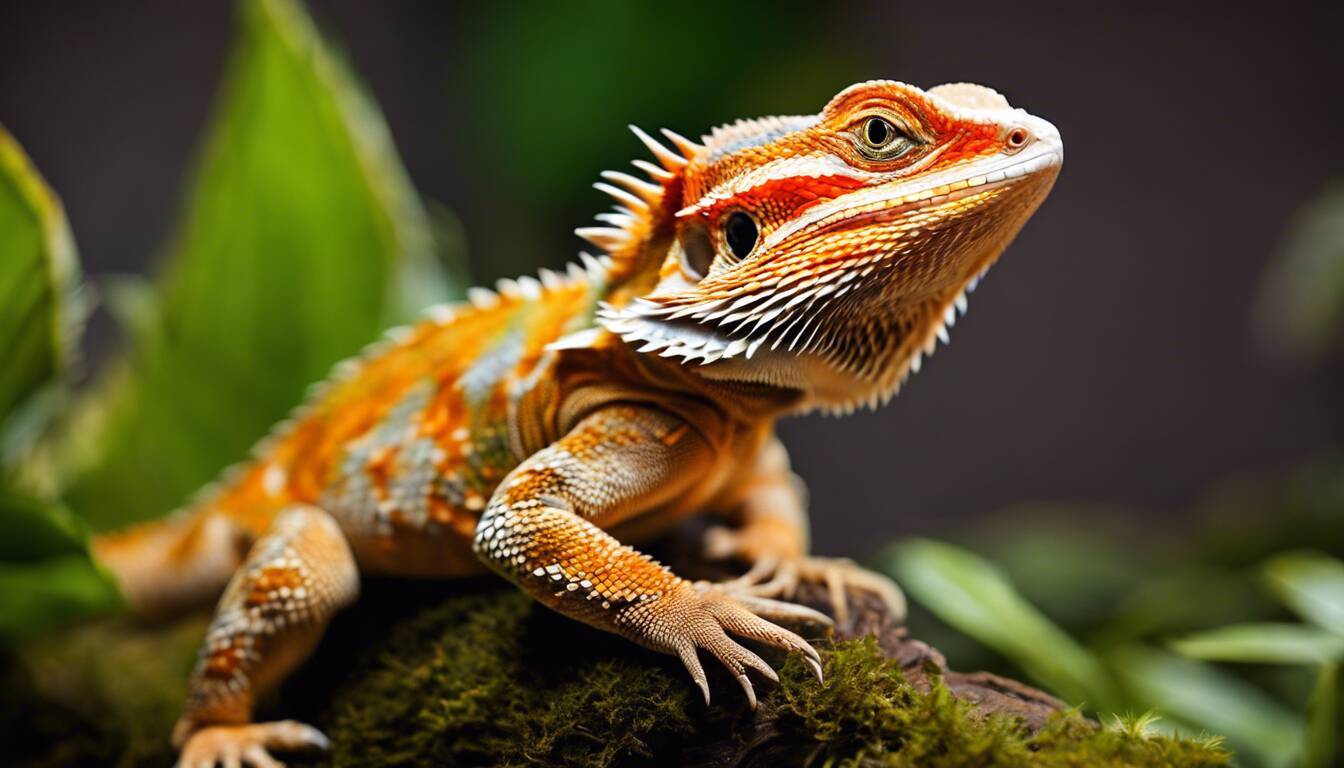
Bearded dragons are known for their distinctive behavior, and understanding it can deepen our connection with these remarkable reptiles. Just like humans, their behavior is influenced by various factors such as age, temperament, and overall health. This means that observing their body language becomes crucial in deciphering their comfort level and preferences.
Understanding how bearded dragons communicate through body language can be fascinating. For example, when they feel threatened or stressed, they might puff up their beard and darken their body color. On the other hand, if they are relaxed and content, they may display behaviors such as gentle head bobbing or slow blinking.
As with any pet, it’s essential to invest time in observing and learning about their behavior. By doing so, you can begin to recognize patterns and understand what makes them feel happy and secure.
Furthermore, their behavior can change over time as they become more familiar with you and their surroundings. Younger bearded dragons might be more skittish and hesitant to interact, but as they grow older and gain trust, they may become more receptive to handling.
It’s interesting to note that some owners have reported that by stroking the row of spikes behind the bearded dragon’s eyes, they’ve been able to calm them down and even induce sleep. However, it’s important to remember that each bearded dragon is an individual with its own personality and past experiences, so their response to petting can vary widely.
Now that we’ve explored the intricacies of their behavior, let’s dive deeper into the specific cues that indicate a bearded dragon’s comfort levels and preferences.
Signs of a Bearded Dragon Enjoying Petting
When spending time with your bearded dragon, it can be rewarding to see them enjoying themselves. Just like any other pet, these reptiles can show signs that they enjoy being petted. One of the most common indicators of a content bearded dragon is their body language. When they are relaxed and at ease, it often means they are enjoying the interaction.
Relaxed Body Language
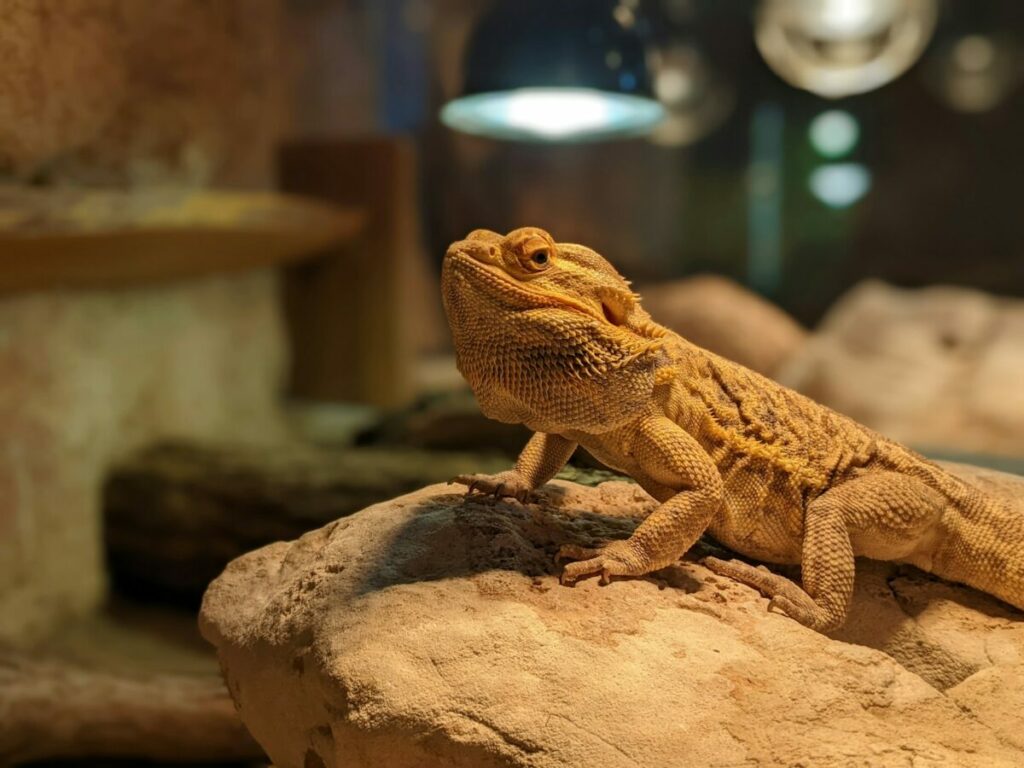
Relaxed body language is a key sign that your bearded dragon is enjoying being petted. They may exhibit this by:
- Partially Closed Eyes: Some bearded dragons will close their eyes partially or even completely when being petted. While there is no definitive evidence to support this, some believe it indicates relaxation or a sense of comfort.
- Calm Demeanor: A calm and composed demeanor is another indicator to look for. If your dragon appears calm and not agitated during petting, it’s likely they are enjoying the attention.
- Lack of Rapid Movements: If your dragon isn’t making quick movements or attempts to escape while being petted, it’s a positive sign that they are comfortable and content.
Leaning Into Touch

Another telltale sign of a bearded dragon enjoying petting is when they lean into the direction of the touch:
- Rubbing Against Hand or Surface: Some bearded dragons may lean into the direction of the petting motion and rub against your hand or another surface. This behavior can indicate that they find the interaction pleasant and comforting.
Understanding these subtle cues from your bearded dragon can help you gauge their comfort level and tailor your interactions to ensure they feel safe and secure. Remember, every reptile has its own unique personality, so observe your specific pet’s reactions to determine what they enjoy most.
In the next section, we will explore the specific areas on a bearded dragon’s body that they particularly enjoy being petted.
See Related: Badass Bearded Dragon Names: Unique and Cool Ideas for Your Pet
Body Parts Bearded Dragons Like to be Petted
When showing your bearded dragon affection, it’s essential to understand the areas they find most comforting when receiving attention.
Head and Neck
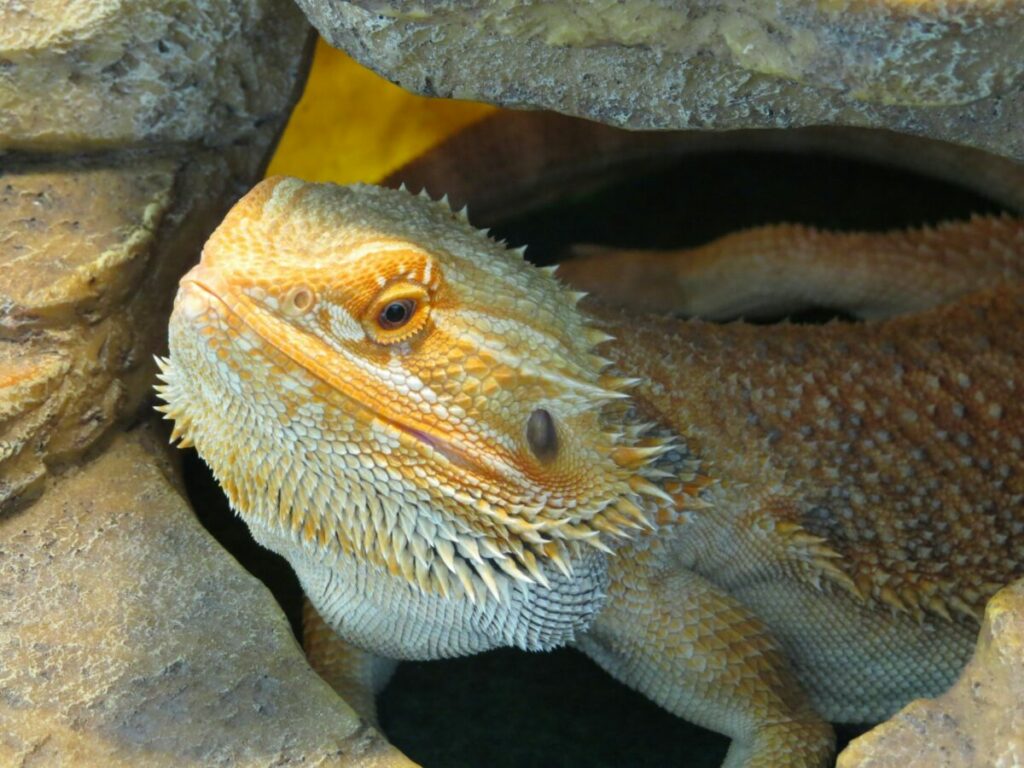
Many bearded dragons enjoy gentle strokes and pats on their head and neck. This can help them feel more comfortable and secure. Just like us, a little massage in these areas can make all the difference in their comfort.
You may notice that some bearded dragons even nuzzle into your hand or fingers when you stroke them in these spots, a clear sign of enjoyment and trust. The area behind their eyes, marked by a row of spikes, holds a certain calming appeal for them.
Behind the Eyes
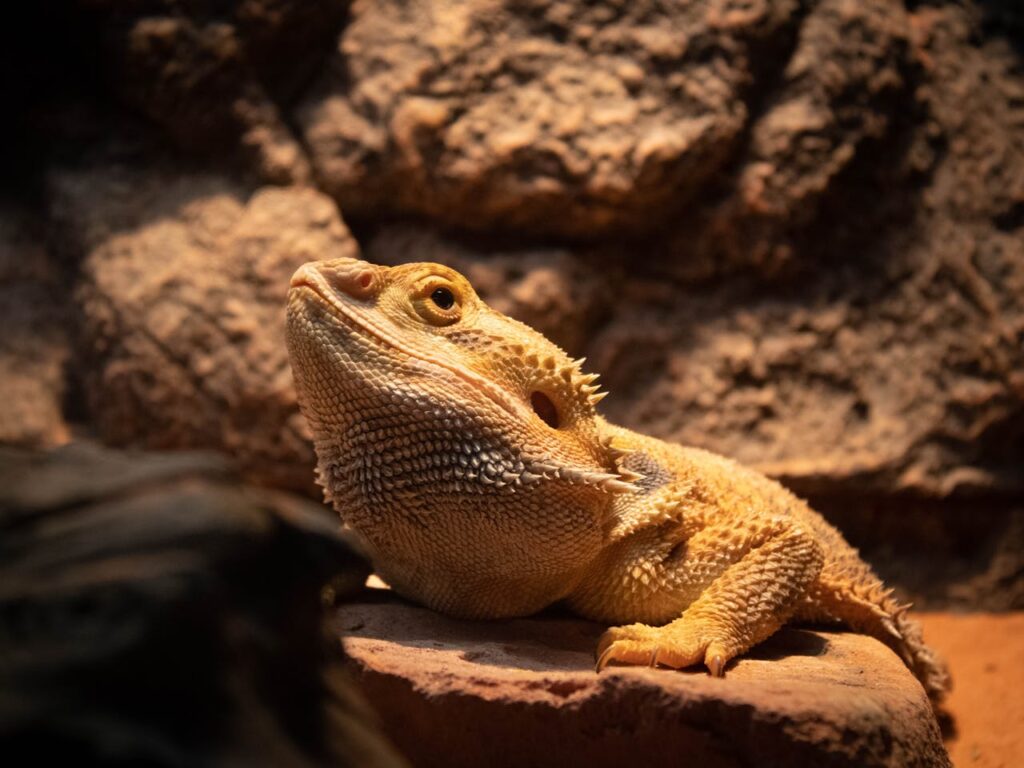
The area behind the eyes is noteworthy as some bearded dragons find it soothing to be gently stroked here, which can help induce a sense of relaxation in them. It is believed that stroking this area might even help put them to sleep, much like how certain actions or motions can lull us humans into calm slumber. Pay close attention to your pet’s body language and notice if they seem to relax more deeply when you touch this spot.
Back and Tail
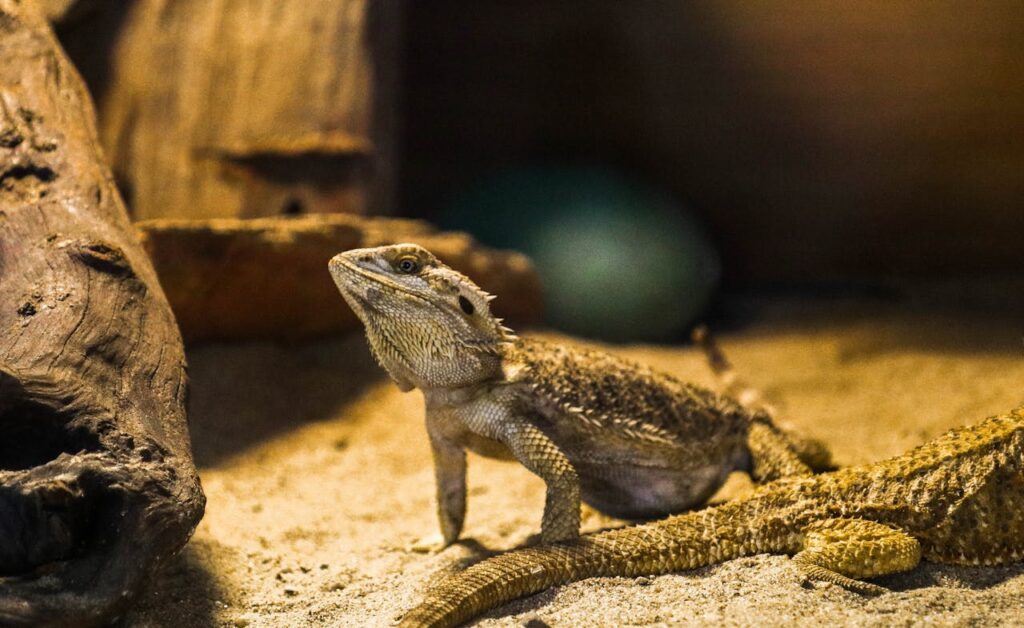
Light touches along their back or tail are preferred by many bearded dragons and can elicit a positive reaction from them. When interacting with your pet, observe their reactions carefully. Each dragon is an individual with its own likes and dislikes. Some may show utter delight while others may simply tolerate these interactions as part of being handled.
This underscores the importance of observing your bearded dragon’s body language and understanding their unique preferences. While some might revel in a gentle pat on their back or tail, others might prefer not to be touched in those areas at all. By noticing their cues, you’ll likely deepen the bond between you and your scaly companion, ensuring that both of you enjoy your time together.
Understanding how to interact with your bearded dragon lays the foundation for building trust and companionship. Next, let’s explore how you can train your bearded dragon to relish these interactions even more.
Training Your Bearded Dragon to Enjoy Petting
Training your bearded dragon might sound a little amusing at first. After all, we’re used to thinking about training dogs or horses, not our scaly little friends. But just like any other pet, bearded dragons can learn to enjoy interaction with humans through gentle and patient training. Here are some tips that can help you and your bearded dragon grow closer through positive experiences.
Gradual Introduction
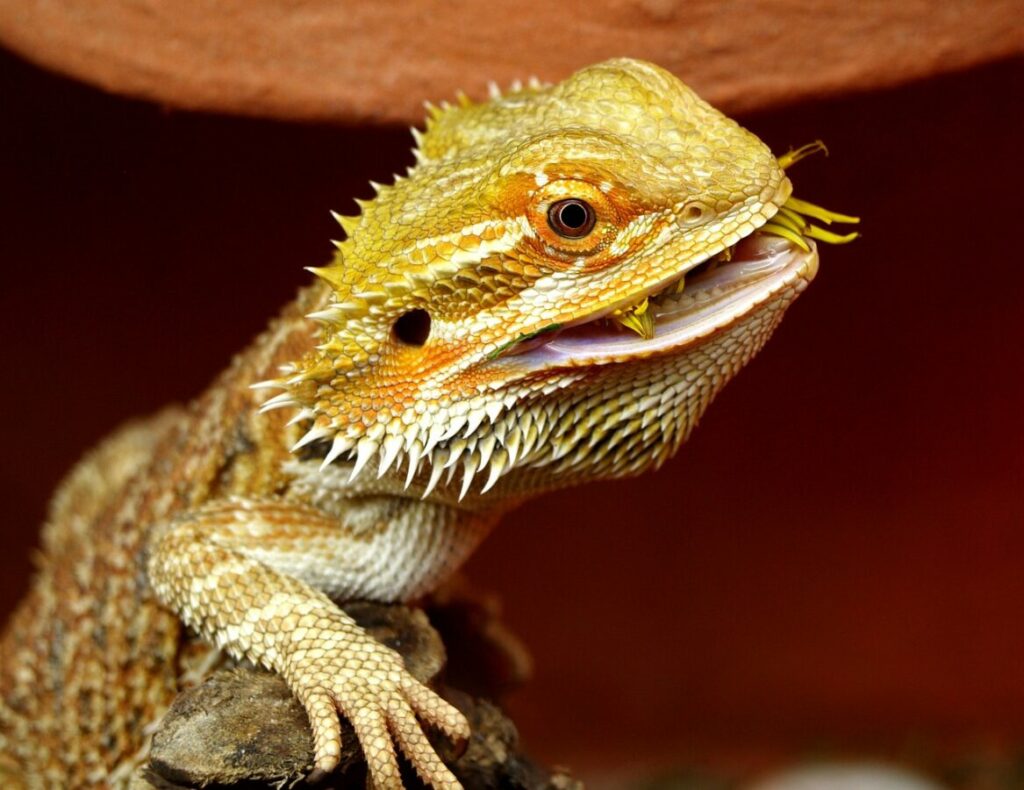
When commencing the training process, it’s crucial to introduce your bearded dragon to petting slowly. Similar to meeting new people or trying new food, this gentle approach helps them feel safe and comfortable. Begin with brief petting sessions, focusing on areas they tend to enjoy being touched. As your bearded dragon becomes more accustomed to the interaction, gradually increase the duration of each session. This gradual progression allows them to build trust and familiarity with the sensation of touch in a positive and stress-free manner.
Positive Reinforcement
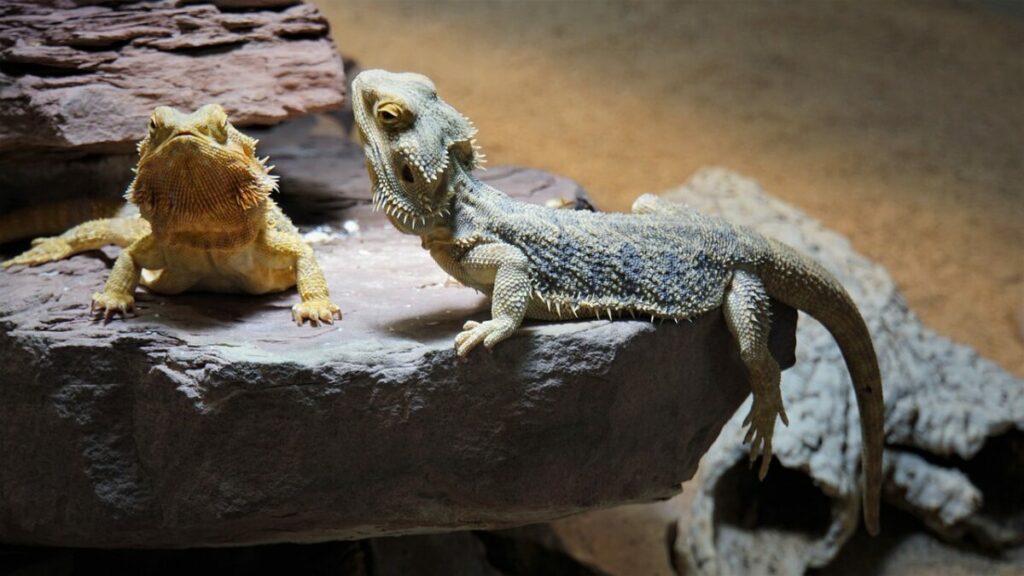
Positive reinforcement is a key element in training any animal, including bearded dragons. Associate petting with positive experiences by offering treats or favorite foods after a successful petting session. By doing so, you create positive associations with the interaction, reinforcing the idea that petting means good things. This can significantly increase their comfort and willingness to engage in affectionate interactions with you over time.
Respect Boundaries
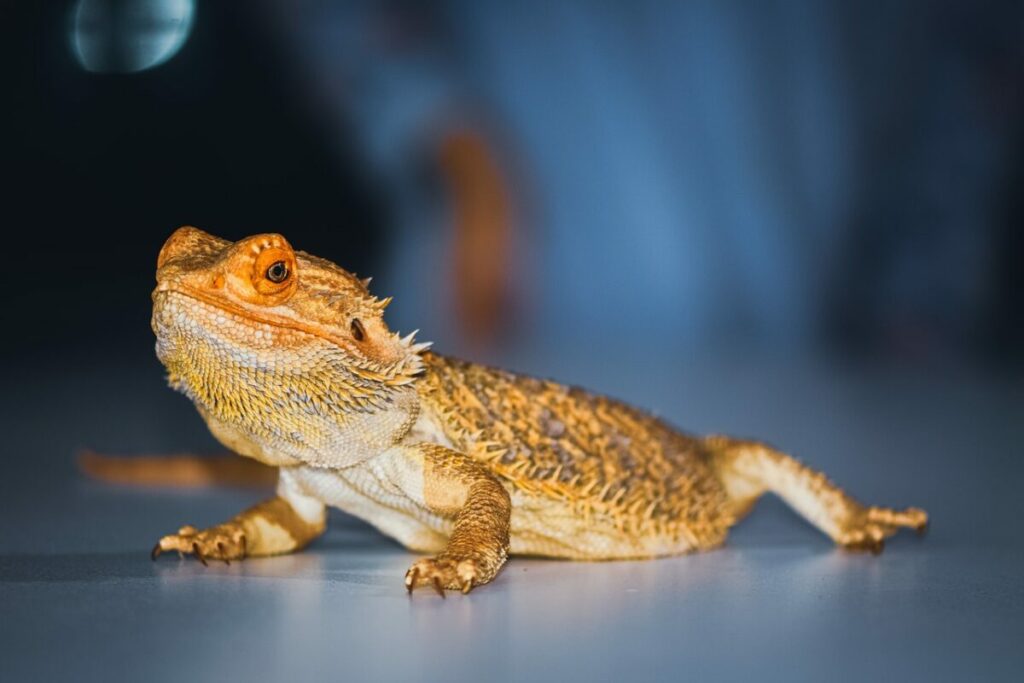
Just like people, bearded dragons have their own boundaries and preferences. It’s crucial to respect their cues during training and interaction. If your bearded dragon shows signs of discomfort, such as flinching or moving away, it’s important to recognize these signals and give them space. This helps maintain their trust and ensures that the interaction remains positive and enjoyable for both you and your pet. By respecting their boundaries, you can create an environment where they feel secure and valued, strengthening your bond as their caregiver.
With these training tips in mind, you can effectively cultivate a positive relationship with your bearded dragon through gentle handling and patient guidance, ultimately fostering a strong sense of trust and companionship between you and your scaly friend.
As you continue to explore the intriguing world of bearded dragon behavior and interaction, let’s now turn our attention to unraveling another captivating aspect—do bearded dragons truly seek cuddles and affection?
Do Bearded Dragons Cuddle?
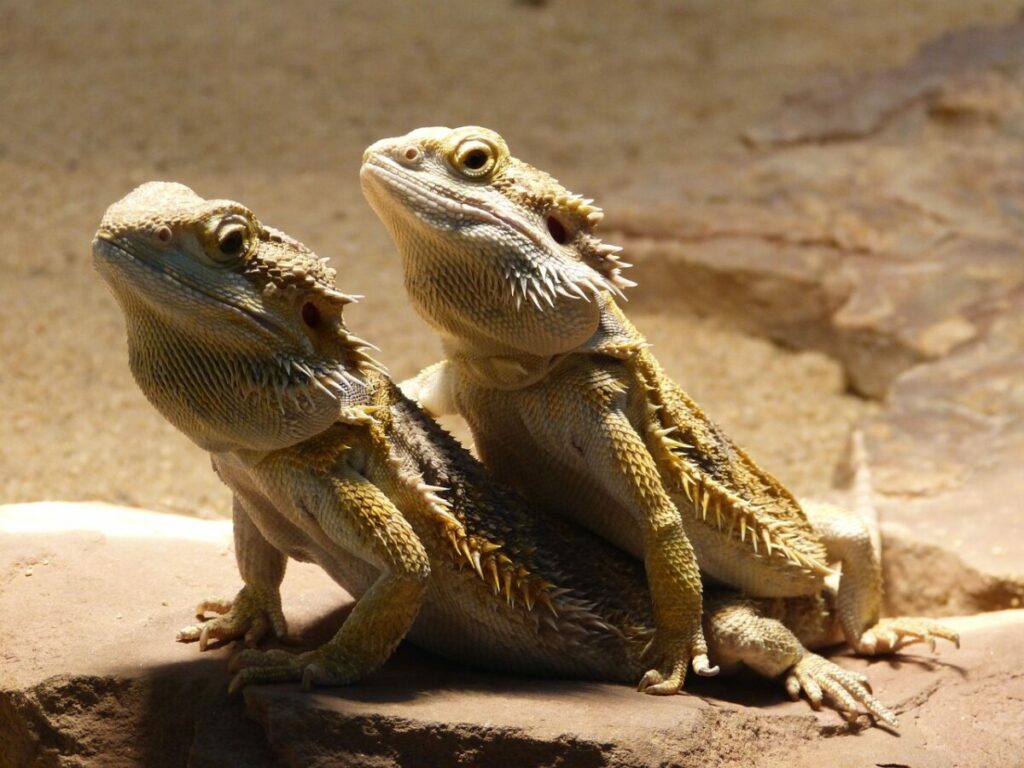
Bearded dragons are renowned for their unique personalities and distinct behaviors. While they may not cuddle in the conventional sense of snuggling up against their owners, they do exhibit a form of “cuddling” that aligns with their natural instincts. These reptiles typically seek warmth and closeness by perching on their owner’s shoulder or lap. This behavior is more about finding a comfortable spot for security and warmth rather than an affectionate gesture akin to mammalian cuddling.
When your bearded dragon perches on you, it’s seeking the comfort and safety of your body heat, much like how it would bask under its heat lamp for warmth. This behavior isn’t an expression of emotional bonding but rather a reflection of the lizard’s instinctual need for warmth and security. Understanding this distinction is crucial in managing our expectations regarding the nature of our interactions with these fascinating creatures.
While it may be disappointing to some pet owners who wish for more demonstrative affection from their beloved reptiles, it’s essential to appreciate their individuality and natural behaviors. By acknowledging their need for warmth and recognizing the ways they seek comfort, we can nurture a mutually respectful relationship with our scaly companions.
In essence, bearded dragons engage in a form of cuddling that revolves around seeking proximity for physical warmth and comfort, not emotional attachment. It’s crucial for pet owners to respect and understand this behavior as part of their pets’ natural instincts rather than seeking emotional reciprocity in the traditional sense.
Remember: Despite the lack of traditional cuddling behaviors, forming a bond with your bearded dragon can still be incredibly rewarding. Observing their unique behaviors and providing them with a suitable environment where they feel secure is key to fostering a positive relationship with these captivating reptiles.
Understanding the subtleties of bearded dragon behavior is crucial in establishing a fulfilling relationship with these remarkable creatures. Moving forward, it’s important to explore how the handling and interaction with our scaly friends can contribute to their overall well-being and contentment.
Distinctive Traits of Bearded Dragons in Reaction to Petting

Bearded dragons have their unique way of showing how they feel when you pet them. Understanding their body language will help you interpret their responses better. For instance, have you noticed that sometimes they close their eyes when you’re giving them a gentle stroke behind their eyes or on their back? It’s not just a coincidence—there’s a lot more to it.
Closed Eyes
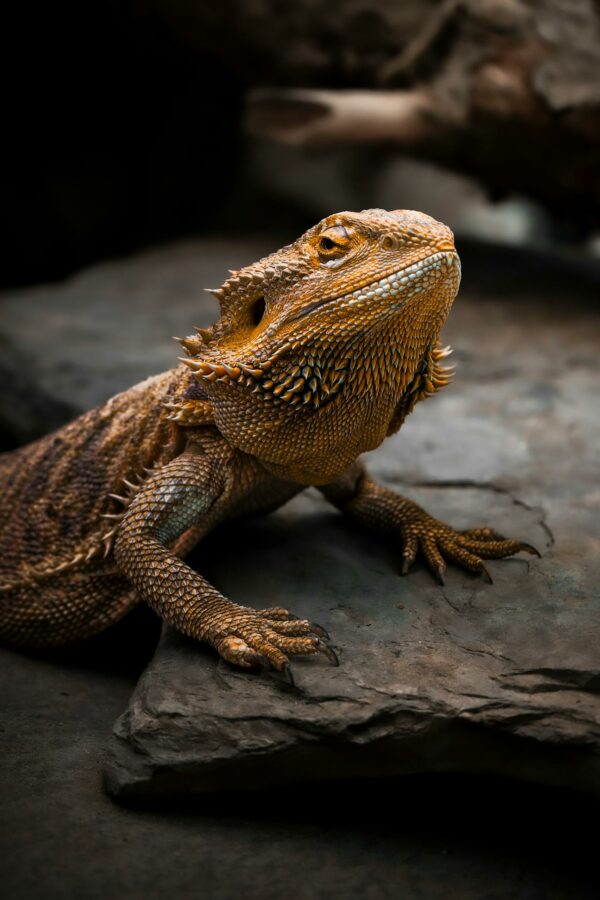
While there is no concrete evidence to prove that bearded dragons enjoy being petted or that closing their eyes indicates happiness, it’s widely believed that they may close their eyes for eye protection or as a reaction to shadows passing over their ‘third eye’. Some anecdotal evidence suggests that some bearded dragons do seem to enjoy being petted and show signs of relaxation, such as gently rubbing against your fingers and falling asleep in your hands. Additionally, stroking the row of spikes behind the bearded dragon’s eyes is thought to calm them down and induce sleep. This area is not only sensitive but also holds a lot of significance for calming them down. Always pay attention to how your dragon is reacting so you can gauge what brings them comfort.
Alertness
Some bearded dragons display alertness and curiosity during petting sessions. They might tilt their head towards your hand or even lick you out of curiosity. These signs suggest engagement in the interaction and could indicate that they’re comfortable with your touch and enjoy the stimulus. This type of positive engagement is an encouraging sign. It shows trust in you and can be seen as a form of bonding between you and your pet. If your bearded dragon shows curiosity during petting and doesn’t exhibit any stress-related behaviors, it’s likely that they are happy and content with the interaction.
Agitation Signs
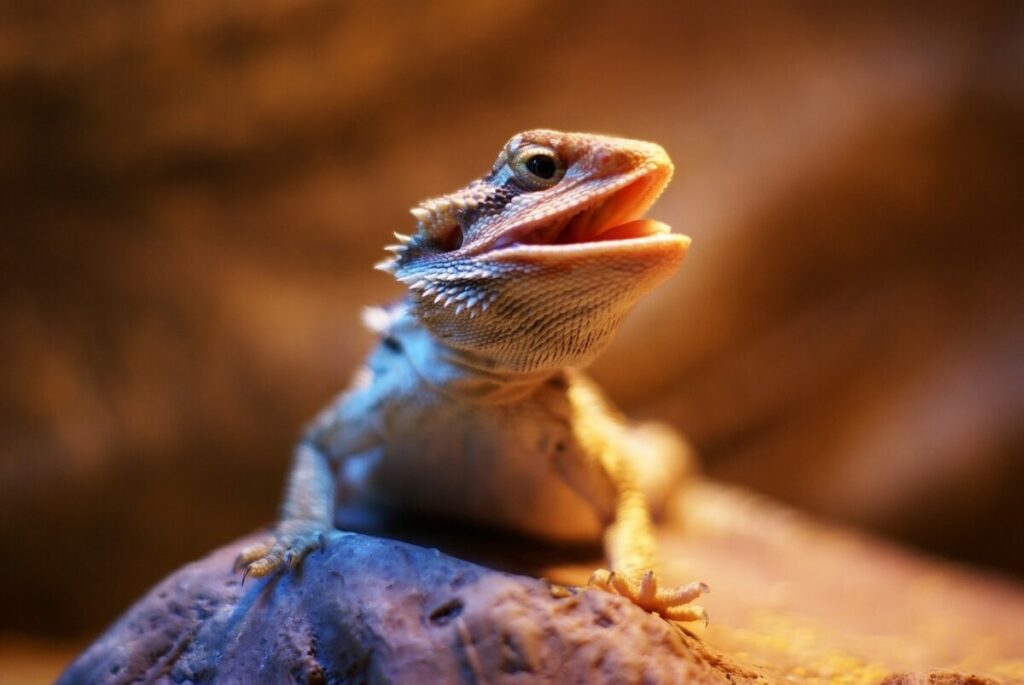
On the other hand, signs of agitation during petting are equally important to recognize. Restlessness, puffing up the beard, and attempts to move away are clear signals that your bearded dragon might not be enjoying the interaction. Just like humans have personal boundaries, animals too have their limits and preference when it comes to physical touch. Similar to how babies show discomfort through fussing or squirming, bearded dragons express agitation when faced with unfavorable situations. Understanding these signs shows respect for their comfort levels which is essential for a healthy and trusting relationship between you and your pet lizard.
Recognizing these distinctive traits provides invaluable insight into understanding and respecting your bearded dragon’s comfort levels during petting sessions while fostering a strong bond between both of you.
By recognizing and responding to the body language of your bearded dragon during petting, you can ensure a positive and enriching interaction that strengthens your bond over time.